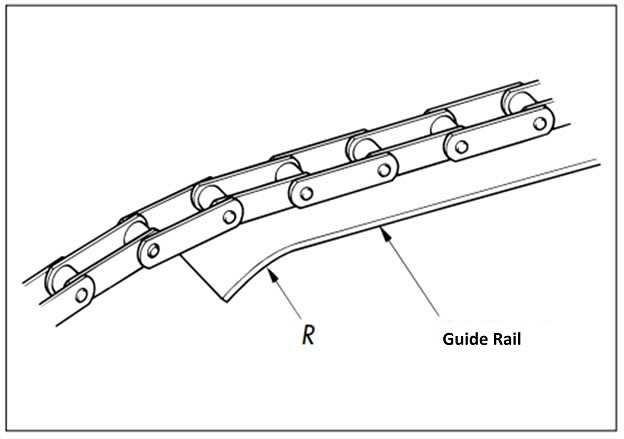Technical Data Sprockets for Large Size Conveyor Chains Handling
1. Mounting
Proper installation of the sprocket has a major influence on smooth conveyance and will affect chain life as well. The installation should be properly carried out in accordance with the procedures described below.
Installation accuracy is a general value viewed from the conveyor chain itself. Follow accuracy constraints of the conveyor main unit, if any.
1.1 Installation Accuracy of the Shafts
1.1.1 Horizontal precision of the shafts
Adjust the levelness of the shaft using a level to within a tolerance of ±1/300.
Fig. 1.Measurement of horizontal precision
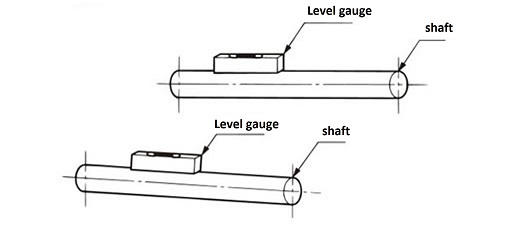
1.1.2 Parallelism of the shafts
Adjust the parallelism of the shaft using a scale to ±1mm.
Fig. 2.Measurement of parallelism of the shafts
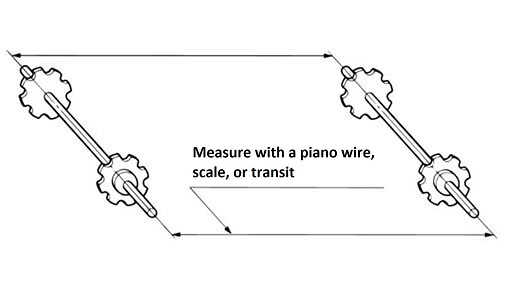
1.1.3 Align the sprocket axis to match.
- ・Distance between shafts up to 1m :±1mm or less
- ・Distance between shafts from 1m–10m :±{Distance between shafts (mm)}/1000 or less
- ・Distance between shafts over 10m :± 10mm or less
Fig. 3.Measurement of sprocket alignment
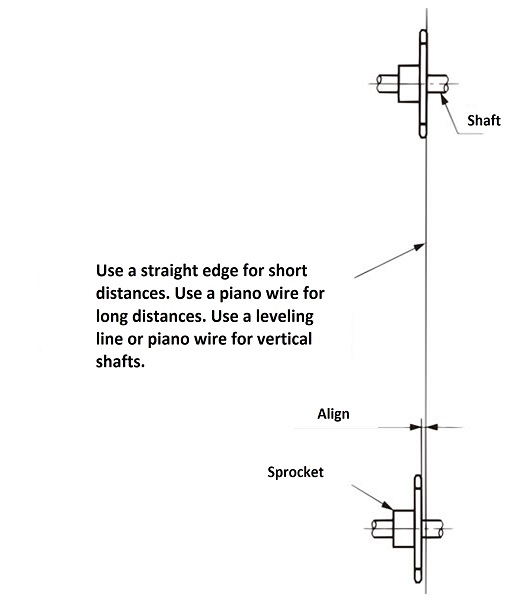
1.1.4 Locking Sprockets
Lock the properly installed sprocket to the shaft with a key.
Sprockets used in parallel strands should be fixed so that two teeth above the shaft center are in phase.
Tsubaki can also supply keyless locking sprockets.
1.2 Rails for Conveyor Chains
- 1)Rail connecting areas should be smooth and free of any edges, clearances, or gaps. )
- 2)After welding rail, remove spatter or scale.
- 3)During the trial run, run the conveyor unloaded. Lubricate the chain and check the condition of chain and rails.
- 4)Chain enter/exit point
Ensure there is a curve to the guide rail for smooth chain running.
Rail connecting area
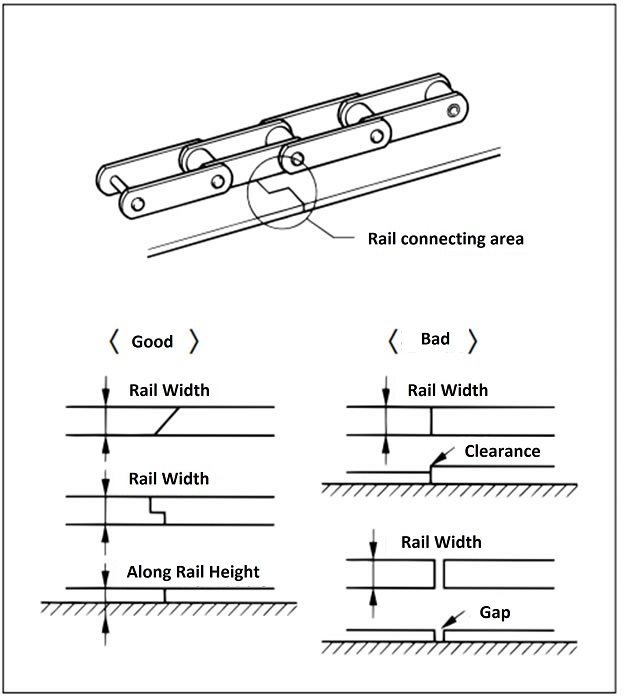
Guide rail where chain enters/exits conveyor
